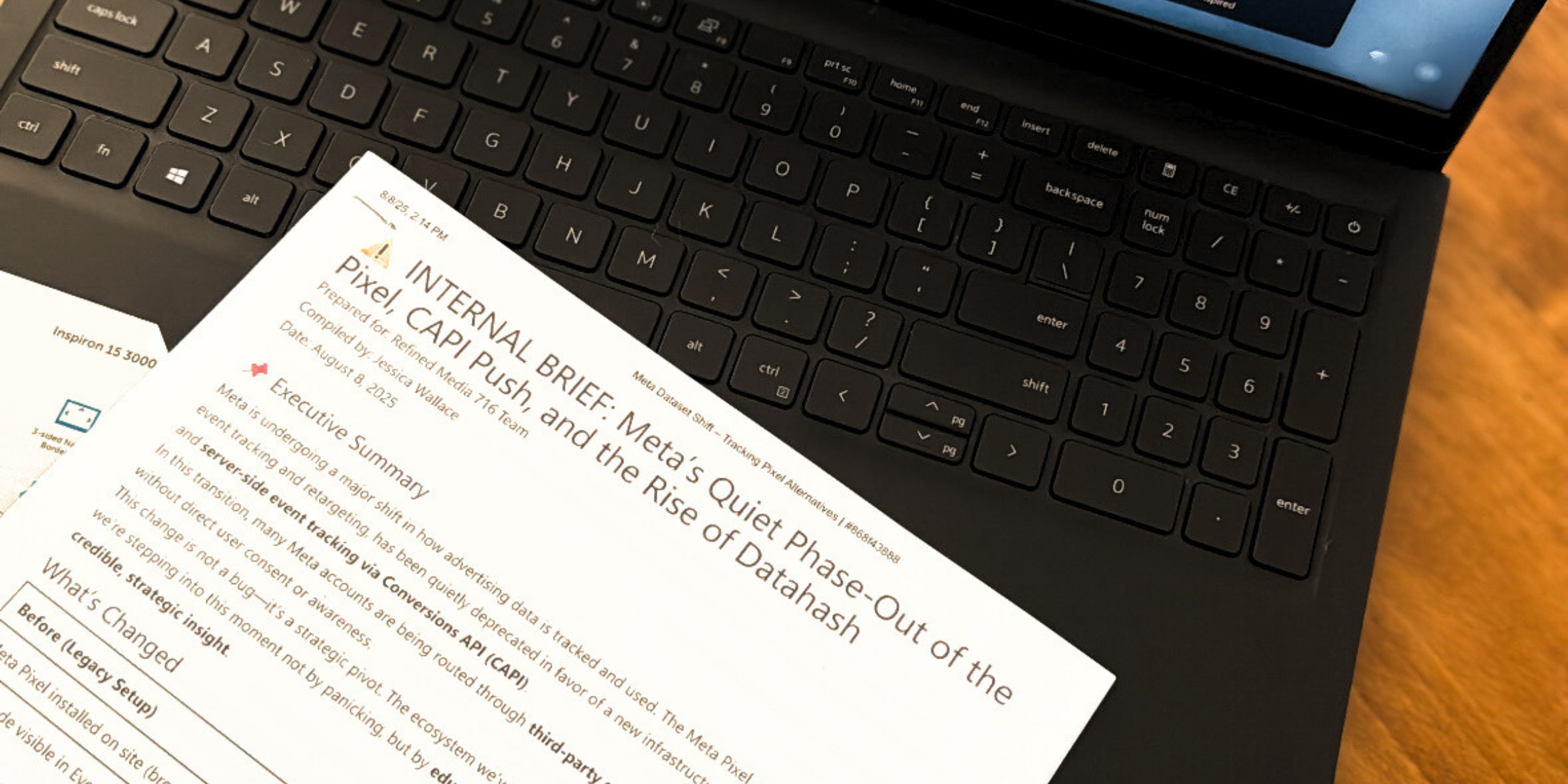Meta’s Quiet Phase-Out of the Pixel: What Advertisers Need to Know in 2025
Meta is making a massive shift.
If you’ve opened your Events Manager lately and thought the interface felt harder to navigate—or noticed key functions are simply gone—you’re not imagining it. This isn’t a glitch. It’s a deliberate move.
What’s changing? At the core, it’s how your advertising data is tracked, routed, and used.
And this isn’t a small tweak. It’s a structural rewrite of Meta’s ad tracking system, and it’s going to ripple through targeting, optimization, and reporting for every advertiser on the platform.
This Shift Has Been in Motion for Years
It might feel sudden, but Meta has been steering toward this moment for a while.
2018–2019: Privacy laws tighten, browsers start blocking third-party cookies.
2020: Apple’s App Tracking Transparency (ATT) rolls out, forcing apps to ask for permission before tracking user data—most users said no.
2022: Conversions API Gateway starts making a name for itself as the “no-code” way to send data server-side, bypassing browser tracking altogether.
Server-side tracking quickly proved its value:
Better Event Match Quality
More accurate attribution
Stronger optimization
Privacy compliance built in
Why Meta Is Making This Shift
Meta’s move from the Pixel to Datasets and server-side Conversions API (CAPI) is about more than new features—it’s a response to:
Privacy regulations like GDPR, CCPA, and the EU’s Digital Markets Act
Browser restrictions from Safari, Firefox, and soon Chrome that limit tracking
The need for cleaner, more reliable data to feed Meta’s algorithm
The Pixel has been losing accuracy for years. Datasets and CAPI send data directly from your site to Meta, giving the platform the signals it needs to optimize ad delivery while keeping tracking compliant.
For advertisers, this is the fork in the road: adapt now and keep your targeting sharp, or risk watching your results taper off.
The Hard Phase-Out Is Here
Q1 2025: Pixel setup still existed but was buried in the interface. CAPI Gateway was “recommended” but optional.
April 2025: First reports of the Pixel option disappearing entirely came from Southeast Asia, Australia & New Zealand, and parts of the EU.
June–July 2025: Most U.S.-based advertisers felt the shift. “Connect Data > Web” vanished from Events Manager. Pixel creation was gone. The default flow now pushes you directly into:
Dataset creation
Immediate CAPI Gateway setup
Suggested partner integration (Datahash appears most often)
If you’ve noticed Datahash prompts or lost access to Pixel setup, you’re already in Phase 2—the full Dataset-first environment.
By Q4 2025, we expect all new ad accounts worldwide will start only with Dataset/CAPI infrastructure.
What This Means for Advertisers and SMBs
For years, running Meta ads could be a DIY project. You could:
Install a Pixel in minutes
Retarget site visitors
Track conversions
Make budget decisions based on clear attribution
That simplicity is gone.
Now, advertisers are funneled into Datasets, CAPI Gateway, or third-party connectors like Datahash. Setting it up correctly requires more technical skill—and without it, you’re sending weaker signals to Meta’s algorithm.
Browser-based tracking can still work if you have a legacy Pixel, but it’s already being deprioritized in delivery and reporting. And based on Meta’s pattern, it won’t be around forever.
The takeaway? Even if your ads “seem fine” right now, the changes under the hood will catch up to performance over time.
Final Word from Refined Media 716
This is one of those shifts that changes the baseline for everyone advertising on Meta. It’s not about panic—it’s about being prepared. The old setup paths and quick fixes aren’t coming back, and waiting until you see a drop in performance means you’re already behind.
If you’re still running on browser-only tracking, you’re likely to see smaller audiences, higher costs, and muddier reporting—not because your ads suddenly stopped working, but because the data powering them is weaker.
The move to Datasets and server-side tracking is permanent. The sooner you make the transition, the more control you’ll have over your targeting, optimization, and results.
At Refined Media 716, we’re already doing this work—auditing accounts, improving event match quality, and navigating integrations like Datahash—so our clients stay competitive, even as the rules change.
Our advice? Don’t wait for your numbers to tell you something’s wrong. Get ahead of it now, and you’ll be in a stronger position for whatever comes next.
